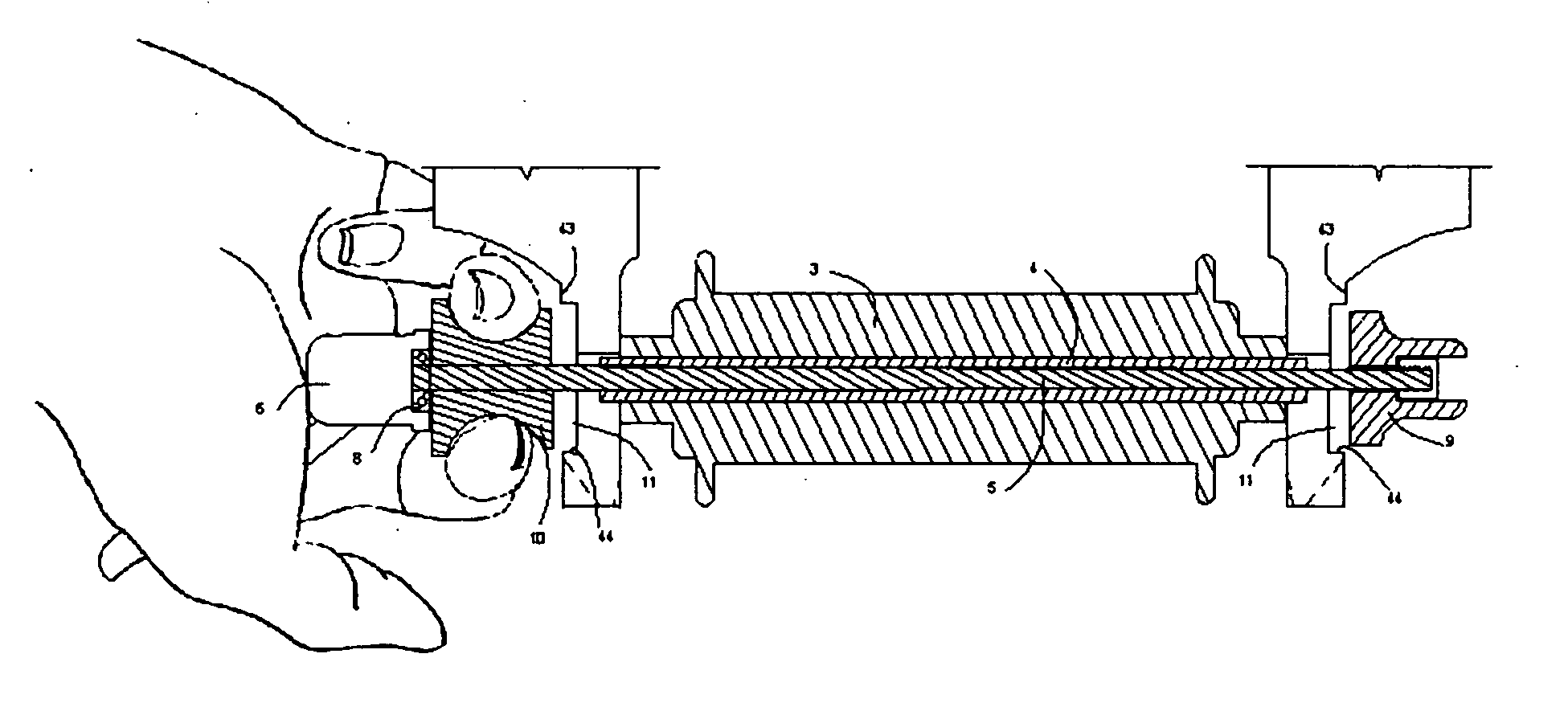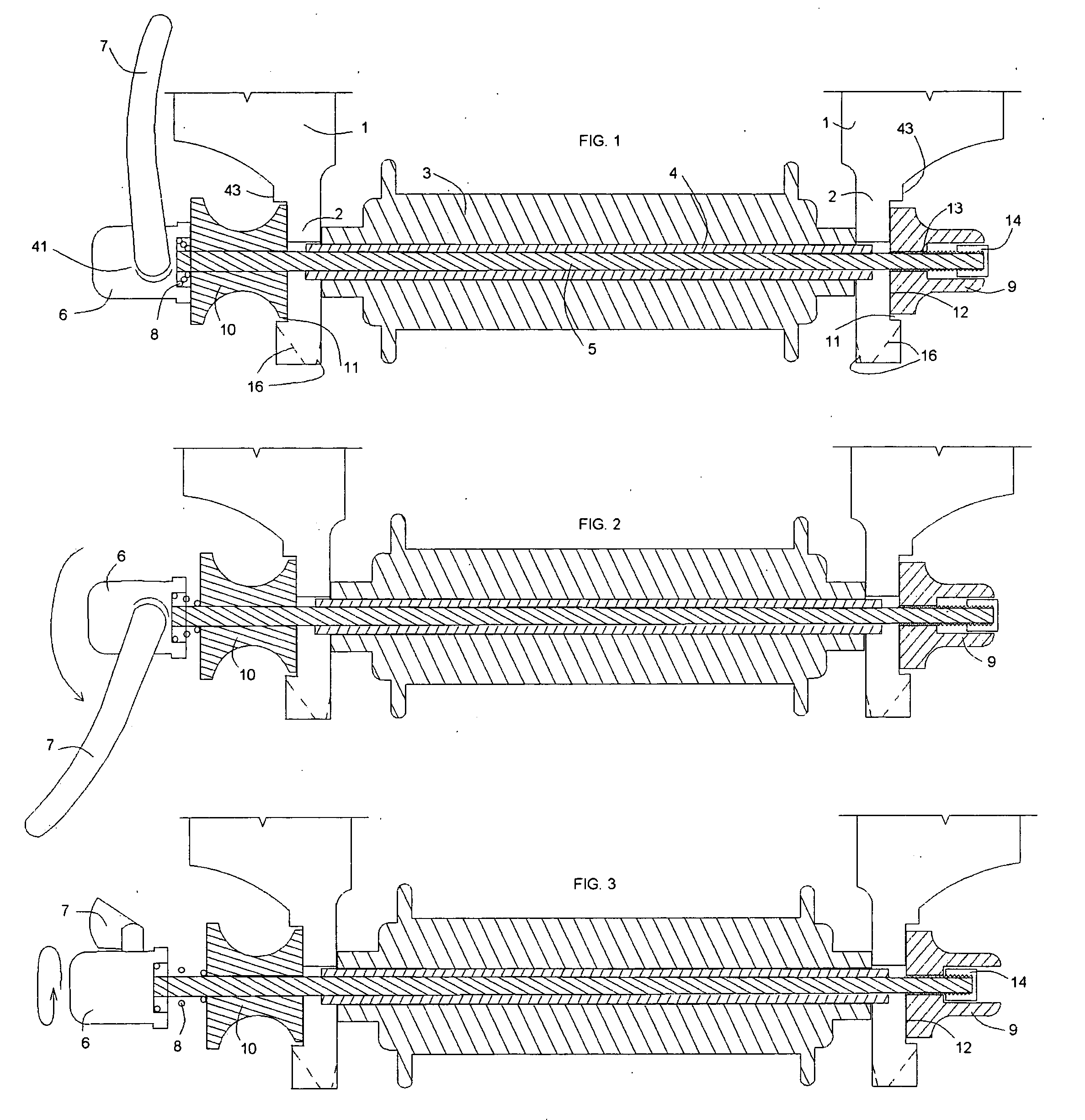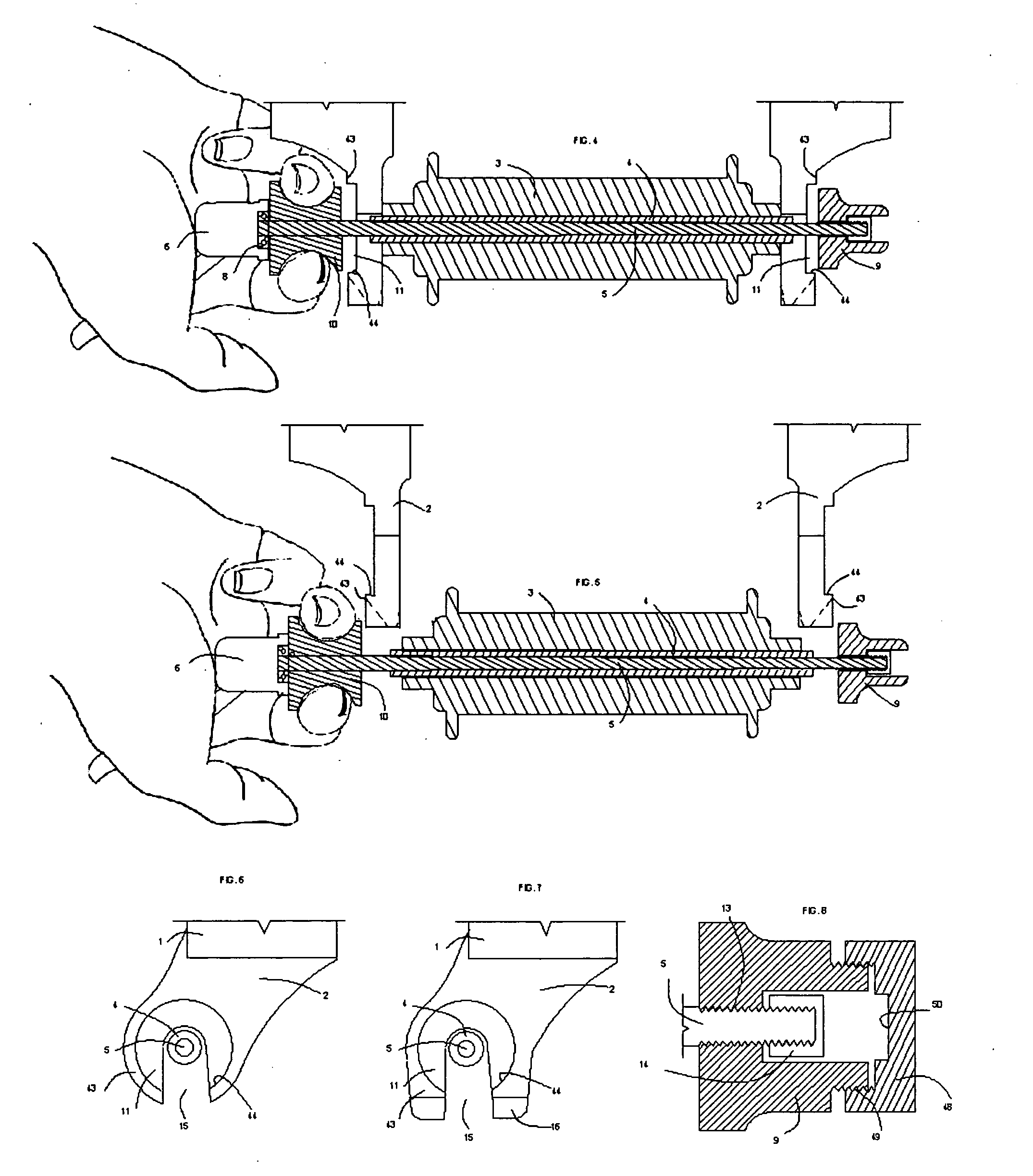Quick release bicycle wheel
- Summary
- Abstract
- Description
- Claims
- Application Information
AI Technical Summary
Benefits of technology
Problems solved by technology
Method used
Image
Examples
Embodiment Construction
[0073] The following is a detailed description of the preferred embodiments of the present invention. It is apparent to those skilled in the art that any number of modifications can be made to the present invention and any such modification shall fall within the present invention even if not specifically shown.
[0074] The fundamental underlying principle of the present invention comprises a wheel fork or vehicle frame with two wheel mounts, or dropouts, where each of the dropouts has a recessed surface or retaining tabs, either on its outer face, or its inner face, or both. The quick release wheel has a hollow axle hub and an interior mounted skewer, wherein said skewer has a quick release cam or other fastening device on one end and a nut on the other end and is spring loaded toward the quick release end such that the nut is always urged against and into the adjacent dropout recessed surface to prevent its rotation and exit from the recess. On the quick release end of the skewer, a...
PUM
 Login to View More
Login to View More Abstract
Description
Claims
Application Information
 Login to View More
Login to View More - R&D
- Intellectual Property
- Life Sciences
- Materials
- Tech Scout
- Unparalleled Data Quality
- Higher Quality Content
- 60% Fewer Hallucinations
Browse by: Latest US Patents, China's latest patents, Technical Efficacy Thesaurus, Application Domain, Technology Topic, Popular Technical Reports.
© 2025 PatSnap. All rights reserved.Legal|Privacy policy|Modern Slavery Act Transparency Statement|Sitemap|About US| Contact US: help@patsnap.com



